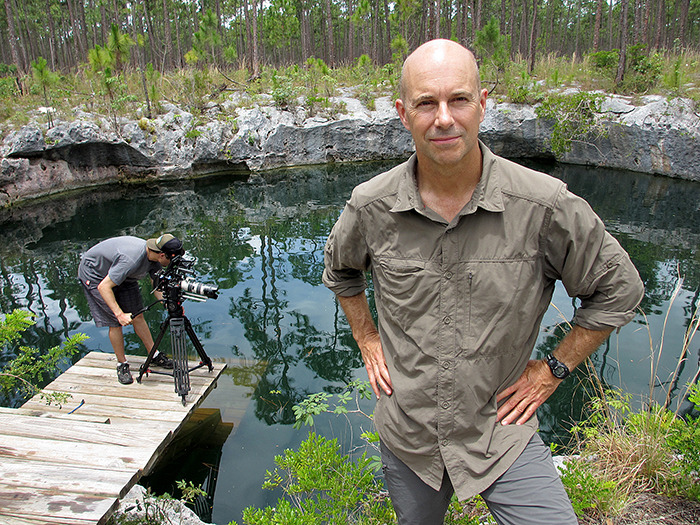Our stereographer Sean White and I had a chance to test out the Fuji FinePix REAL W3 3D camera while I was at the Victoria Film Festival showing some of our 3D documentary material last week.
In brief
First, props to Fuji for putting this little camera on the market. Almost any venture into the third dimension is a good move in our books, and the price point will surely entice more consumers to delve into this exciting new realm.
But from a technical standpoint, much like the Panasonic AG-3DA1 we tested a few weeks back, the Fuji W3 3D camera just doesn’t compare to the quality we can get from using a two-camera system on either a side-by-side or beam-splitter rig … yet.
Like the Panasonic, I suspect this will improve with time.
But there’s another huge dealbreaker: the Fuji W3 3D buffer only allows you to shoot 12 seconds of video at the highest quality settings – completely inadequate for any professional video applications.
In today’s market I expect a camera that not only shoots high-quality stills, but video as well. So, in the end, we ended up taking the camera back. Even if Fuji increases the image quality, we won’t even consider buying another one until the video recording capacity also increases … drastically.
The bottom line – props to Panasonic and Fuji for blazing some trails … but in the high-end 3D filmmaking world, two is still better than one.
–Ian Herring, President
The full review
Here’s a more thorough rundown of the camera’s functions, including still photos, courtesy of Sean:
It’s pretty cool that there’s even something like this available for less than $500. Having 3D stills and video in a point-and-shoot, the ability to adjust the convergence, see it instantly on an autostereoscopic display AND fit the whole thing in your pocket is impressive indeed.
However, the quality of the images doesn’t match up to the quality of today’s best 2D compact cameras. Still, I believe this is a major leap forward in terms of making 3D accessible to the masses. The stills quality is definitely acceptable for personal use and web. The autostereoscopic screen is actually quite sharp and effective once you find the sweet spot. The technology is designed so the separate left and right eyes are seen at the same time without any glasses but only from a certain viewing distance and angle.
In this case, the best view is directly in line with the screen, about 30-50cm away. What’s really great about this camera is how it makes 3D believers out of folks not accustomed to watching 3D a lot. At a recent film festival, we shot some pics of guests and we were able to explain the basics of 3D photography with instant results in the users hands. Lots of “wows” and “do that again”. Very cool.
On a technical note, the 75mm inter-axial distance is fine for most average shots but be careful not to get any closer than about 2-3m to your nearest subject or the background will “explode” (Aka: massive divergence). There’s an adapter that use mirrors to effectively reduce the interaxial to about 25mm but we haven’t tried it yet – check it out.
On the downside, the video only shoots 720, not 1080, which is fine for the web but unfortunately the video quality again is not as good as other 2D compact cameras out there. The big heart breaker was that the buffer in the camera only allows a maximum of 12 seconds video when recording at the highest settings. Lame.
Also, there’s no software support for Macintosh which is what we’re all using so I haven’t had a chance to perform any post-production functions. The camera does connect fine to a 3D monitor however it won’t display the saved converged files so you’re not really seeing the proper 3D shots.
I applaud Fuji for packing this all together, especially with the autostereoscopic screen but the video quality, video buffer and interface tools need to be improved big time.

